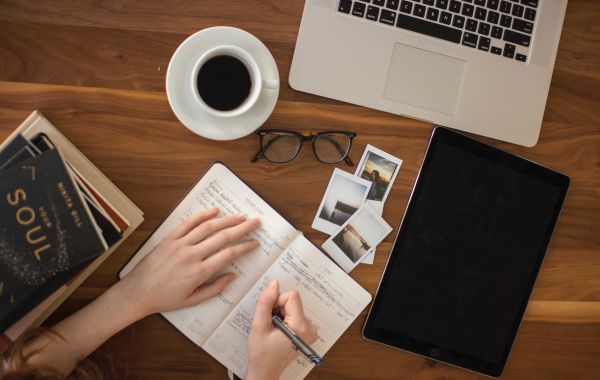As demands for exceptional mobile applications soar, developers need tools to craft seamless user interfaces (UI) and user experiences (UX). Flutter and Kotlin stand out as game-changers. This blog explores how combining these technologies revolutionizes mobile UI/UX, guiding developers to master this art.
Flutter and Kotlin: Foundations for Mobile Excellence
Flutter is Google's open-source UI toolkit for building apps natively across platforms from a single codebase. Its 'hot reload' feature boosts productivity by showing code changes in real-time. A rich widget collection simplifies creating intricate, responsive UIs, making Flutter ideal for design-focused developers. Kotlin is a modern language embraced by Google for Android app development. Its concise syntax, interoperability with Java, and powerful features streamline coding, enhancing app performance and maintainability.
The side we're looking at now, is Kotlin. It's made by JetBrains. Kotlin calls itself a cutting-edge, type-checked code language. It's designed for the JVM (Java Virtual Machine). Kotlin works seamlessly with Java code. But Kotlin stands out by eliminating much of Java's wordiness. So, coders can write cleaner, more readable stuff. Kotlin prizes safety, clarity, and tool help. This makes Kotlin a smart choice for Android app building tasks. Kotlin simplifies complex jobs. Developers produce more efficient, error-resistant code using Kotlin. Kotlin emphasizes concise syntax. This makes codebases easier to maintain. Concise syntax also assists rapid feature rollout and implementation. This improves the whole mobile app workflow.
Flutter's Widgets Empower Slick UI Design
Flutter flips the script on crafting engaging, intuitive user interfaces. It employs a special, widget-focused architecture. This framework views everything in an app's UI as a widget. From basic buttons and text boxes, to whole screens or apps. This holistic approach lets developers compose fancy UIs. They use widget hierarchies, promoting modular, reusable code. Flutter provides many pre-built widgets from popular design languages. Like Material Design for Android and Cupertino for iOS. Devs can easily make gorgeous, platform-compliant UIs using these widgets. Using Flutter's widgets ensures consistent visuals and behavior across platforms. Enhancing app appeal and usability.
Plus, Flutter enables custom widget creation. Developers can precisely tailor UIs without compromising performance or speed. Essential for standing out with unique, memorable experiences in the mobile app market. Flutter's widget architecture underpins developers' pursuit of aesthetic, functional excellence in mobile apps.
Good To Read :- Flutter Vs React Native Vs Kotlin: Which One To Choose?
Utilizing Kotlin's Conciseness for Improved UX
Kotlin makes making mobile apps simpler. Its short and clear syntax cuts down redundant code. This impacts user experience positively. Complex features integrate quickly without cluttering code. Kotlin's emphasis on readability ensures intricate functions fit in fewer lines. This minimizes errors and stabilizes the app. Kotlin's coroutines boost app responsiveness vitally. They enable efficient background operations and UI updates flow smoother. This makes user interactions fluid while intensive tasks run. Not only does it keep apps responsive, but also decreases development time. Asynchronous operations code is simplified. Kotlin's extension functions let developers cleanly add functionalities to existing classes. This further enhances intuitive and engaging user experiences. Through concise syntax and powerful features, Kotlin empowers creating not just functional apps but seamless, enjoyable user experiences. This underscores Kotlin's importance in mobile app development.
Streamlining Development Processes with Flutter and Kotlin
The cooperation between Flutter and Kotlin boosts mobile app development efficiency significantly. Flutter's hot reload feature streamlines design workflow. It allows instant visualization of tweaks without rebuilds or long compiles. Handy for UI development with frequent adjustments. Meanwhile, Kotlin's concise syntax and advanced tools like coroutines simplify coding. Developers face less cognitive load by skipping verbose boilerplate. Complex functionality implementation and asynchronous task management become easier. The result? Cleaner, more manageable codebase. Reduced development time.
Together, these technologies foster a productive environment for app makers. Flutter's rich widget library and Kotlin's concise code enable rapid prototyping and refinement of features - boosting creativity. Plus, Kotlin's Java interoperability smooths migration from Java projects. This integration lets teams meet tight deadlines by quickly iterating based on user feedback or testing insights. All while maintaining high app quality and performance.
Must Read :- Kotlin Vs Flutter: What to Choose – When and Why?
Boost Performance and Responsiveness with Flutter and Kotlin
Want your mobile app to run super smooth? Flutter and Kotlin make it happen! Flutter turns code into native apps, optimized for any device. This lets them load fast and respond instantly, no lags here! And Kotlin's coroutines keep the UI buttery by handling tasks separately. Tapping or scrolling feels natural, never frozen.
But that's not all! Kotlin cuts clutter, so devs focus on turbo-charging key features. Combined with Flutter's layout widgets, your app zips along, reacting lightning-quick to every touch. It's a power team for performance and responsiveness.
These two join forces to bring high-octane speed to mobile apps. Flutter maximizes hardware for rapid startups and slick operations everywhere. Kotlin strips hassles to streamline development of efficient code. Together, they raise the bar for zippy, responsive apps that delight users at every tap.
Case Studies: UI/UX Enhancements through Flutter and Kotlin
The mobile app world showcases success from adopting Flutter and Kotlin for UI/UX design. A standout is Google Ads, utilizing Flutter to deliver an engaging experience across platforms. Its customizable widgets provide a cohesive design boosting interaction. The KotlinConf app by JetBrains highlights Kotlin's mobile development prowess. Built with Kotlin, it boasts sophisticated UI elements like smooth animations and efficient background tasks through clean coding. These examples showcase aesthetic and functional upgrades enabled by Flutter and Kotlin. They prove how these technologies elevate mobile app standards, giving users visually appealing, intuitive, and reliable experiences. Integrating Flutter and Kotlin strategically crafts apps that truly excel in today's competitive market.
Transform your ideas into market-leading solutions with top software product development services in India. Act now!
Wrapping Up
Flutter and Kotlin's synergy in mobile app development ushers a new era for UI/UX enhancement. Leveraging Flutter's extensive widgets and Kotlin's concise coding, developers create standout apps combining beauty and functionality. This powerful duo allows transcending traditional design limits, promising engaging, seamless user experiences. As digital interfaces evolve, Flutter and Kotlin's collaboration will continue shaping innovative, user-centric app designs, setting new excellence standards in the mobile app domain.








